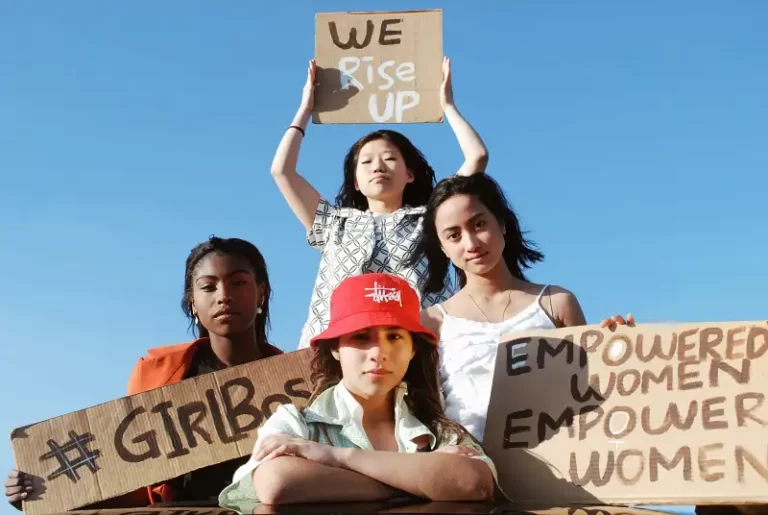Table of Contents
- Understanding Gangs Beyond the Male-Centric Narrative
- Women in Gangs: Roles and Representations
- The Intersection of Gender, Race, and Class
- Patriarchy Within Gang Structures
- Resistance, Agency, and Empowerment
- Feminist Critiques of Traditional Gang Research
- Implications for Policy and Practice
- Theoretical Contributions of Feminist Perspectives
- Case Studies and Examples
- Global Perspectives
- Methodological Challenges
- Conclusion
The study of gangs has traditionally been dominated by criminological and sociological perspectives that focus on crime, deviance, and social control. However, feminist sociology offers a distinctive lens for examining gangs, one that foregrounds issues of gender, power, inequality, and patriarchy. While gangs are often stereotypically associated with young men, feminist analysis reveals the hidden complexities of female involvement, the gendered nature of gang culture, and the structural inequalities that shape both male and female participation. This article provides an extended undergraduate-level exploration of the feminist view of gangs, highlighting its contributions, critiques, insights, and implications for both research and practice.
Understanding Gangs Beyond the Male-Centric Narrative
For decades, scholarship and media representations have predominantly portrayed gangs as male-dominated spaces. Such portrayals overlook the presence, roles, and experiences of women within gangs. A feminist perspective emphasizes:
- The invisibility of women in gang research, particularly in earlier sociological studies.
- The ways in which gendered stereotypes frame women in gangs either as victims (coerced into participation) or as aberrations (masculine, deviant figures).
- The need to interrogate how patriarchy and gender hierarchies operate within gangs themselves, not only in wider society.
By shifting the focus to gender relations, feminist sociology uncovers how gang membership is shaped by unequal social structures that extend beyond criminal activity. It also challenges popular cultural images of gangs by uncovering the realities of women’s participation, which is often diverse, complex, and under-theorized.
Women in Gangs: Roles and Representations
Feminist approaches draw attention to the nuanced roles women occupy in gangs. These roles often reflect broader societal gender norms, but also reveal moments of subversion and agency.
Supporting Roles
Women are frequently positioned in auxiliary or supporting roles, such as caretakers, romantic partners, or facilitators of gang activity. Their contributions—whether logistical, emotional, or material—are often undervalued or dismissed in traditional studies. They may provide safe houses, conceal weapons, or handle communications, yet such work is hidden from academic and policy discourse.
Active Participants
Contrary to stereotypes, many women play active roles in gang operations. They may be involved in drug distribution, weapon handling, or leadership. However, these positions are often contested and subject to male dominance. Female leadership is possible, but it usually requires navigating significant resistance from male peers and balancing respect with fear.
Victimization and Exploitation
Feminist research also highlights how women in gangs can face exploitation, sexual coercion, and gender-based violence. Their participation is frequently constrained by patriarchal dynamics both within the gang and in wider social structures. Many are pressured into sexual relationships with male leaders, reinforcing the patriarchal structures that frame women’s bodies as symbolic and material resources.
The Intersection of Gender, Race, and Class
A feminist view of gangs cannot be isolated from other axes of inequality. Intersectional analysis demonstrates how gender interacts with race and class to shape gang experiences:
- Many women in gangs come from marginalized communities facing poverty, unemployment, and systemic racism.
- Gendered expectations intersect with racialized stereotypes, often portraying young women of color as hypersexualized or inherently deviant.
- Structural inequalities limit opportunities for education and employment, making gang involvement one of the few viable options for some women.
Intersectionality underscores how social identity categories are inseparable. For instance, Latina women in U.S. gangs experience gendered oppression tied to cultural expectations of femininity, while Black women face racialized policing practices that shape their gang involvement differently. In global contexts, women in urban gangs in Latin America or Africa face additional burdens from colonial legacies and neoliberal inequalities, making their participation highly contextual.
Patriarchy Within Gang Structures
Patriarchy is not merely external to gangs; it operates internally as a structuring principle. Feminist studies reveal that:
- Leadership positions are usually dominated by men, reinforcing traditional hierarchies.
- Women who seek power or authority within gangs may be stigmatized as unfeminine or threatening.
- Gendered double standards exist, where male violence is normalized as a marker of toughness, but female violence is pathologized.
Patriarchy within gangs mirrors the dynamics of the wider social world. Women who participate in violent acts may be labeled as “crazy” or “unnatural,” while men receive validation for their aggression. This double standard illustrates how gangs are both resistant subcultures and reproductive spaces of patriarchal ideology.
Resistance, Agency, and Empowerment
Although feminist perspectives highlight victimization, they also recognize women’s agency. Women in gangs are not merely passive participants; they often resist patriarchal expectations and find empowerment through gang membership.
- For some, gangs provide protection against male violence in their communities.
- Gangs can offer a sense of solidarity and belonging, particularly for women excluded from other forms of social membership.
- Gang participation can challenge traditional femininity, allowing women to redefine their identities in ways that resist patriarchal control.
Yet, this empowerment is often ambivalent, as it occurs within a structure that simultaneously reinforces gender subordination. For example, a woman who finds protection and solidarity in her gang may still be subject to exploitation by male leaders. Agency, in this sense, is constrained and negotiated rather than absolute.
Feminist Critiques of Traditional Gang Research
Get the full article AD FREE. Join now for full access to all premium articles.
View Plans & Subscribe Already a member? Log in.





